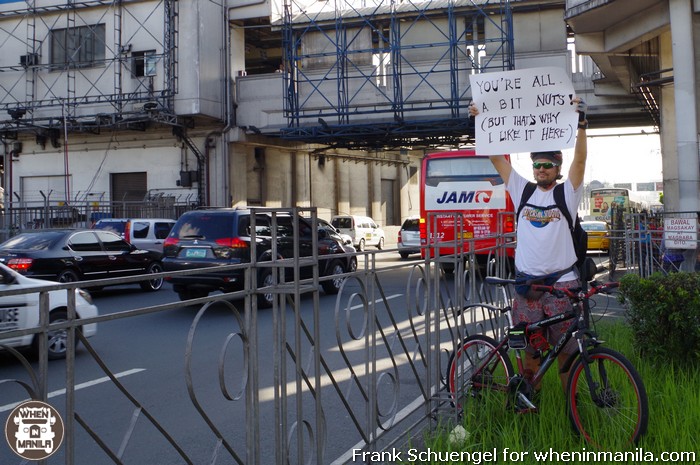7 Things I Learned About Metro Manila Traffic While Cycling
When you come from a country where traffic runs in relative order, taking to the roads in Metro Manila can seem like a terrifying task at first, and especially so if you choose to travel by bicycle and are placing yourself at the bottom of the road user food chain as a result. Over time, however, things become less scary and after a while you learn how to tune in to the frantic frequency of the road, you become one with it, and you learn how to go with the relentless flow of the unstoppable metal avalanche. It’s like reaching Zen, on two wheels, while everyone is trying to run you over.
Having done a few thousand kilometers on my bicycle around the Metro by now, a number of things caught my eye over the years. So these are my seven unscientific Metro Manila traffic rules, based on observations while travelling around on two wheels:
1. If there is a gap in traffic, no matter how small, you are legally required to make use of it. If there is no gap, then you are allowed to make one. The same goes for the impromptu creation of additional lanes in any direction and for using shortcuts, such as the old “cut through the gas station at the corner” favorite. As long as you think it will help you to get to your destination faster than the next man, it’s game.
2. Change lanes often, especially in heavy traffic. Change lanes, then change back, and change lanes over again. You will get to your destination faster this way. Change double the number of lanes if you drive a taxi. Change lanes without looking if you are driving a Jeepney or a Bus.
3. If you drive a Jeepney, it’s fine to stop wherever you want. Your fellow motorists won’t mind that at all. Quite the opposite: they will honk their horns in appreciation of your road skills while trying to squeeze past you. Cyclists and pedestrians also love your safe and soft front bumpers that are unlikely to cause any injury or death in case of a collision. They encourage us to move faster when you come hurtling towards us, training our reflexes and helping us to stay fit in the process.
4. Despite looking that way most of the time, driving is not actually a contact sport. You are allowed to come within millimeters of a crash in order to intimidate your opponents and secure your spot on the road (remember rule 1: you HAVE to make use of that gap), but actual contact is forbidden. You may use various intimidation tactics to further your progress on the road, such as wildly flashing your lights, honking your horn like a man possessed, or if you happen to be a VIP (Very Insecure Person) you can also hire a rent-a-cop on a motorbike who will tell the pesky peasants to get out of your way.
5. Should you ignore the No Contact rule for whatever reason, then stop your vehicle immediately. It’s irrelevant if the damage is invisible and you are blocking EDSA during Friday rush-hour as a result: do not move your car for at least 30 minutes while you argue with the other driver and someone creates an oil painting of your vehicles in situ.
6. Bus stops are for losers. Stop your bus wherever you want. Passengers appreciate an impromptu game of Frogger while trying to get on or off your bus. Car drivers following behind also appreciate the impromptu brake and reflex test.
7. There is a way to gain absolute immunity from any traffic rules such as pesky speed limits, using indicators, and slamming on the brakes without warning: simply stick the letters T, a, x and i on your car. You may also use the letters s,e,c,u,r,i,t,y or you can switch the hazard indicators on and simply barge your way through traffic. The latter approach works best if used in a convoy of multiple black SUVs, preferably with a few rent-a-cops thrown in for good measure. Don’t try and cheat your way through traffic using an ambulance, though. Nobody cares about those and you will just end up sitting in traffic like everyone else, your siren blaring and lights flashing like an ice cream truck on steroids.
These are just some of the things I noticed until now and there are bound to be loads more. One thing is for certain: you have to be a little bit nuts to take to the roads here, but that’s also why I like it. Every trip is a mini adventure that allows you to learn new road survival skills and keeps your senses sharpened. Feel free to let us know your favorite observations of Manila traffic in the comments!
7 Things I Learned About Metro Manila Traffic While Cycling





